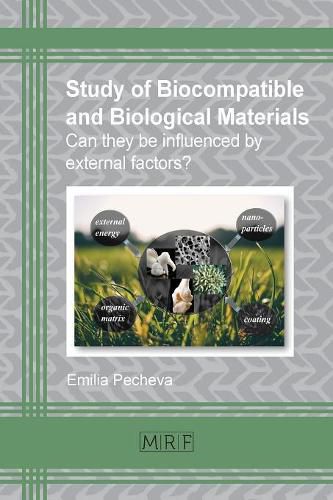Readings Newsletter
Become a Readings Member to make your shopping experience even easier.
Sign in or sign up for free!
You’re not far away from qualifying for FREE standard shipping within Australia
You’ve qualified for FREE standard shipping within Australia
The cart is loading…






This title is printed to order. This book may have been self-published. If so, we cannot guarantee the quality of the content. In the main most books will have gone through the editing process however some may not. We therefore suggest that you be aware of this before ordering this book. If in doubt check either the author or publisher’s details as we are unable to accept any returns unless they are faulty. Please contact us if you have any questions.
The book gives an overview on biomineralization, biological, biocompatible and biomimetic materials. It reveals the use of biomaterials alone or in composites, how their performance can be improved by tailoring their surface properties by external factors and how standard surface modification techniques can be applied in the area of biomaterials to beneficially influence their growth on surfaces.
Important in studying of biomineralization is the study of the surface and chapter 2 explores typical techniques for surface characterization and shows how these techniques can be modified to serve specific needs in the study of biomaterials. Chapters 3 and 4 reveal factors that can be used to influence the growth of the biomaterial hydroxyapatite (the main inorganic constituent in mammal bones and teeth), namely laser energy, organic matrix and incorporation of minor amount of nanoparticles into the hydroxyapatite matrix. Proteins are also used to modulate the cellular interactions with the hydroxyapatite.
The following three chapters (5, 6 and 7) are devoted to an example of the pathological mineralization, namely the formation of bacterial films on teeth and soft tissues in the mouth and how they can be removed to achieve better oral health.
$9.00 standard shipping within Australia
FREE standard shipping within Australia for orders over $100.00
Express & International shipping calculated at checkout
This title is printed to order. This book may have been self-published. If so, we cannot guarantee the quality of the content. In the main most books will have gone through the editing process however some may not. We therefore suggest that you be aware of this before ordering this book. If in doubt check either the author or publisher’s details as we are unable to accept any returns unless they are faulty. Please contact us if you have any questions.
The book gives an overview on biomineralization, biological, biocompatible and biomimetic materials. It reveals the use of biomaterials alone or in composites, how their performance can be improved by tailoring their surface properties by external factors and how standard surface modification techniques can be applied in the area of biomaterials to beneficially influence their growth on surfaces.
Important in studying of biomineralization is the study of the surface and chapter 2 explores typical techniques for surface characterization and shows how these techniques can be modified to serve specific needs in the study of biomaterials. Chapters 3 and 4 reveal factors that can be used to influence the growth of the biomaterial hydroxyapatite (the main inorganic constituent in mammal bones and teeth), namely laser energy, organic matrix and incorporation of minor amount of nanoparticles into the hydroxyapatite matrix. Proteins are also used to modulate the cellular interactions with the hydroxyapatite.
The following three chapters (5, 6 and 7) are devoted to an example of the pathological mineralization, namely the formation of bacterial films on teeth and soft tissues in the mouth and how they can be removed to achieve better oral health.